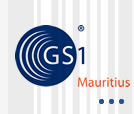Speed through customs with the ATA Carnet
When showing samples to customers or potential customers, exhibiting at a trade fair or transporting equipment to provide a service, chose the simple and proven way to move business goods to foreign lands - the ATA Carnet, the Passport for Goods.
The expansion of international trade has brought a considerable growth in temporary exports of all kinds. Traders regularly need to temporarily take abroad samples of value, goods for trade fairs and exhibitions or professional equipment in order to seek orders for their products, and generally speaking, to broaden their outlet. Since customs procedures can be quite lengthy and complicated, a simplified system was introduced some 40 years ago by international treaty to facilitate temporary exports. The ATA Carnet, an internationally recognised Customs document which streamlines customs procedures for temporary exports, lies at the core of this system.
In line with its primary objective of facilitating trade and business development, the MCCI has been providing access to the ATA Carnet since 1983.
FREQUENTLY ASKED QUESTIONS
What is the ATA Carnet system?
The ATA Carnet System is an international Customs facilitation scheme for the temporary admission of goods. “ATA” is actually an acronym of the French and English words “admission temporaire/temporary admission”. It is governed by the Istanbul Convention of 1990, which was established under the auspices of the Customs Co-Operation Council, today known as the World Customs Organisation. The ATA Carnet system is administered by Chambers of Commerce in countries which have ratified the Istanbul Convention. In Mauritius, it is administered by the MCCI.
What is an ATA Carnet?
The ATA Carnet is an internationally recognised and accepted uniform Customs document to allow for the temporary importation of goods into a member country (i.e. a country party to the scheme), and this without having to raise Customs bonds, pay duty or fulfill other Customs formalities in the country of importation.
For the ATA Carnet system to function efficiently, there must be some means whereby national customs authorities are ensured that duties and taxes will be paid in case goods temporarily admitted under cover of ATA Carnets are not returned back to the country of exportation. This is achieved by a system of reciprocal guarantee through which the ATA Carnet incorporates an internationally valid guarantee to cover import duties and taxes that may become due in case the goods are not re-exported.
What are the advantages of the ATA Carnet?
Simplification of Customs procedures
The carnet is instantly recognised and accepted by Customs officials at border posts in countries party to the scheme. Exporters are not required to provide a deposit or guarantee to the customs authorities of the country of temporary importation.
Advance preparation
Exporters can make Customs arrangements in advance of a visit to the country or countries they intend to visit. More importantly, these arrangements are made locally, and quickly.
Single Document for Many Countries
A single ATA Carnet may be used for goods that will pass through several Customs authorities during the course of one trip. The carnet can be used multiple times and in multiple countries during the period of validity, provided that the same goods are being covered.
What are the items covered by the ATA Carnet?
- Commercial samples
- Goods for international trade fairs and exhibitions
- Professional equipment
Some countries may have emitted reservations regarding the items covered by the ATA carnet. The MCCI will inform you of such reservations when determining whether the issue of an ATA carnet is suitable for a specific destination.
What are the items excluded from the ATA Carnet?
ATA carnets do not cover perishable or consumable items intended to be given away, disposed of, or utilised abroad or goods for processing or repair.
How much does it cost to get an ATA Carnet?
The price depends on the value of the goods covered.
|
Value of samples |
Price inclusive of VAT |
|
Less than Rs 10,000 |
Rs 1,725 |
|
Rs 10,001 to Rs 50,000 |
Rs 2,300 |
|
Rs 50,001 to Rs 100,000 |
Rs 3,450 |
|
Rs 100,001 to Rs Rs 500,000 |
Rs 4,025 |
|
Rs 500,001 to Rs 1000,000 |
Rs 4,600 |
|
Above Rs 1,000,000 |
Rs 5,750 |
Conditions to be observed by the ATA Carnet Holder
Goods imported under an ATA Carnet should not be sold. Such goods must be re-exported by the ATA Carnet Holder within the period approved for their temporary admission. It is therefore particularly important to obtain the correct Customs verification of entry and exit from each country visited. Failure to do so may lead to Customs duty and a penalty or tax being imposed.
Strict adherence to the conditions governing the use of ATA Carnets is the responsibility of the Carnet holder. As the guaranteeing organisation, the MCCI must pay all claims resulting from the improper use of a Carnet. Therefore, the MCCI is required to hold a refundable security deposit, either in the form of an office cheque or a Bank Guarantee from the carnet holder. The deposit value varies between 35% to 100% of the value of the goods being exported, depending on the type and value of the goods.
Liability of ATA Carnet Holders
Presentation of the Carnet to Customs
It is the ATA Carnet holder’s duty to present the ATA Carnet to the Customs authorities when entering or leaving the country for necessary verification and certification. Failure to do so may result in a claim being made against the holder.
So, to avoid incurring any costs for duties and taxation, ensure that the certificates are validated upon entry and exit. Take particular care to ensure that the Yellow Re-Importation Counterfoil (back into Mauritius) is stamped.
Exceeding Stipulated Time Frames
It is the ATA Carnet holders’ responsibility to ensure that they remain within the validity period stipulated on the ATA Carnet, as well as the period stipulated by each country the goods will enter, failing which they will become liable for any taxes or duties that result.
Loss of the ATA Carnet
If the ATA Carnet document itself is destroyed, lost or stolen, the ATA Carnet holder should immediately notify the local police and/or Customs and obtain a covering statement from them. The Carnet Holder must request a new ATA Carnet from the MCCI before re-exportation can be validated from the country of temporary importation.
Lost, Stolen or Destroyed Goods
If any goods covered by an ATA Carnet are destroyed, lost or stolen whilst in a foreign country, the ATA Carnet holder will automatically become liable for Customs duty etc.
Is it possible to get an ATA Carnet for all countries?
No. Legal basis for the ATA scheme is the Istanbul Convention.
What is the Application Process for an ATA Carnet?
1. Contact the MCCI to determine whether the issue of an ATA Carnet is suitable.
2. Collect and complete the ATA Carnet and Undertaking Form (Lettre d’Engagement). For the ATA Carnet, complete section A, B, C and D on the front of all forms (except those referenced “For Use by Customs”), then complete the General List on the back, itemising the goods to be covered, together with serial numbers, weight, value and country of origin.
3. Submit the ATA Carnet to MCCI for approval, together with the adequate security to cover duty and taxes. Pay the issuing fee.
What are the origins of the ATA Carnet system?
Historically, a primary form of international custom document for temporary admission of goods existed in the form of triptyques or carnets de passage en douane for the temporary admission of motor vehicles. With the expansion of international trade, a strong need was felt for more simplified customs formalities, especially for those traders who would frequently cross international barriers with commercial samples and advertising material.
After suggestions and negotiations made at the Congress for Customs Regulations and the Customs Co-operation Council, a Convention was passed regarding ECS Carnets for commercial samples, which was to be the predecessor of the A.T.A Carnet. It also covered temporary admission of advertising material. The ECS Scheme achieved very satisfactory results within the trading community. The latter soon wished to secure similar facilities for other types of temporary admission facilities. Eventually, the A.T.A Convention entered into force on 30th July 1963, eventually replaced by the Istanbul Convention of 1990.
For additional information on the ATA Carnet System, click here: www.atacarnets.org
Australia
June 1995
Australian Chamber of Commerce and Industry (ACCI)
Austria
September 2014
Austrian Federal Economic Chamber
China
April 1997
China Council for the Promotion of International Trade (CCPIT) - Beijing
China International Economic and Trade Arbitration Commission - Shanghai
November 1998
CCPIT Guangdong Sub-Council
September 2008
CCPIT Qingdao
May 2007
CCPIT Qingdao
Comores
April 2017
L´Union des Chambres de Commerce, d´Industrie et d´Agriculture
Djibouti
August 2008
Chamber of Commerce of Djibouti
Estonia
September 2015
Estonia Chamber of Commerce and Industry
France
September 1996
l’Assemblée des Chambres Françaises de Commerce et d’Industrie (ACFCI)
India
November 1985
Federation of Indian Chambers of Commerce and Industry (FICCI)
May 1996
Confederation of Indian Industry (CII)
June 1995
Tamil Nadu Chamber of Commerce and Industry
January 2004
India International Trade Center
May 2004
Seafood Exporters Association of India
October 2005
Seafood Exporters Association of India
Kenya
January 2011
The Kenya National Chamber of Commerce and Industry (KNCCI)
Madagascar
November 2004
Fédération des Chambres de Commerce, d’Industrie, d’Artisanat et d’Agriculture de Madagascar
Malaysia
August 1994
The National Chamber of Commerce and Industry of Malaysia
June 2005
Malaysian Associated Indian Chambers of Commerce and Industry
Mozambique
September 2012
Chamber of Commerce of Mozambique
Nigeria
June 2019
Nigeria Association of Chambers of Commerce and Industry, Mines and Agriculture
Pakistan
October 2004
The Federation of Pakistan Chambers of Commerce and Industry (FPCCI)
Réunion
June 1995
Chambre of Commerce and d’Industrie de la Réunion
March 2002
L’Association pour le Développement Industriel de la Réunion
Russia
May 2007
Chamber of Commerce and Industry of the Russian Federation
Seychelles
November 2005
Seychelles Chamber of Commerce and Industry
April 2014
Seychelles Chamber of Commerce and Industry
Slovakia
September 2018
Slovak Chamber of Commerce and Industry (SCCI)
South Africa
September 2016
South African Chamber of Commerce and Industry
Sri Lanka
May 2004
National Chamber of Commerce of Sri Lanka
Taiwan
September 2017
Taiwan External Trade Development Council
Tanzania
January 2011
The Tanzania Chamber of Commerce, Industry and Agriculture (TCCIA)
Thailand
August 2004
The Federation of Thai Industries (F.T.I)
February 2013
TUSKON
Turkey
August 2014
DEIK (Foreign Economic Relations Board)
TOBB (The Union of Chambers and Commodity Exchanges of Turkey)
Business Resources







